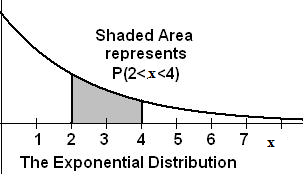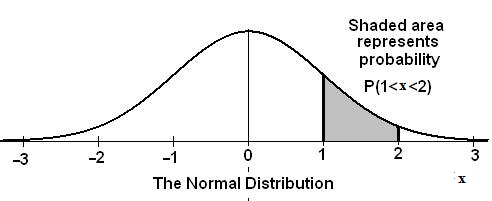| << Chapter < Page | Chapter >> Page > |
By the end of this chapter, the student should be able to:
Continuous random variables have many applications. Baseball batting averages, IQ scores, the length of time a long distance telephone call lasts, the amount of money a person carries, thelength of time a computer chip lasts, and SAT scores are just a few. The field of reliability depends on a variety of continuous random variables.
This chapter gives an introduction to continuous random variables and the many continuous distributions. We will be studying these continuous distributions for several chapters.
The graph of a continuous probability distribution is a curve. Probability is represented by area under the curve.
The curve is called the probability density function (abbreviated: pdf ). We use the symbol to represent the curve. is the function that corresponds to the graph; we use the density function to draw the graph of the probability distribution.
Area under the curve is given by a different function called the cumulative distribution function (abbreviated: cdf ). The cumulative distribution function is used to evaluate probability as area.
We will find the area that represents probability by using geometry, formulas, technology, or probability tables. In general, calculus is needed to find the area under the curve for many probability density functions. When we use formulas to find the area in this textbook, the formulas were found by using the techniques of integral calculus. However, because most students taking this course have not studied calculus, we will not be using calculus in this textbook.
There are many continuous probability distributions. When using a continuous probability distribution to model probability, the distribution used is selected to best model and fit the particular situation.
In this chapter and the next chapter, we will study the uniform distribution, the exponential distribution, and the normal distribution. The following graphs illustrate these distributions.



**With contributions from Roberta Bloom

Notification Switch
Would you like to follow the 'Collaborative statistics using spreadsheets' conversation and receive update notifications?